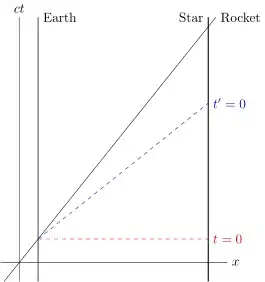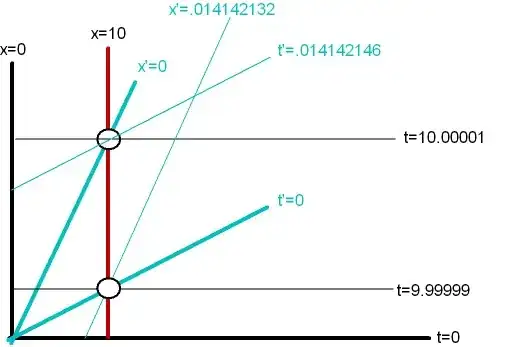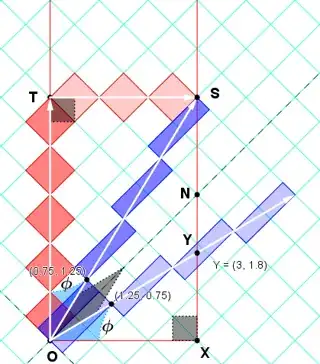In the earth frame, there is a star ten light years from earth, and at rest with respect to the earth. In the earth frame, a rocket is passing the earth at 0.999999 times the speed of light in a vacuum. In the earth frame the clocks on the earth, star, and rocket all display "zero" at this time.
In the rocket frame, the star is (due to Lorentz contraction), (because gamma is 707.1) 5.16 light days from the rocket and the earth, and the star clock displays a little under "ten years", due to time desynchronization. In the rocket frame, the star takes just over 5.16 days to reach the rocket (which regards its frame as being at rest), during which time the star clock changes by a negligible amount, due to time dilation being so great (gamma is 707) and the journey time in the rocket frame being so short (just over 5.16 days). So it should still read less than "ten years".
The trip in the earth-star frame has taken just over ten years, so the clock on the star must read just over ten years when the rocket arrives at the star.
In the rocket frame, when the rocket arrives at the star, the star clock displays just over ten years, because that's how long the trip took in the earth-star frame, and now that the rocket is at the star, the display of the star clock in the two frames are the same.
This is the paradox. In the rocket frame how does the star clock get from just under ten years to just over ten years during just 5.16 light days of highly time-dilated running?
It seems helpful to consider what happens if the rocket makes the trip at a slightly lower speed. The star clock, in the rocket frame, initially displays a quantity that is even further below ten years. The journey time in the earth-star frame is greater than ten years by an even greater amount. But in the rocket frame the star clock still doesn't have a much different chance to advance, due to the combination of Lorentz contraction and time dilation. I mean, the journey now takes maybe 10 days, in the rocket frame, so the star clock will only advance (because gamma is 707.1) about 240 hours divided by say 353 which is about 0.69 hours.
If there are calculations that can disprove my intuitions, I would be glad to see them.
Edit: I don't know how I got 0.69 hours. That might not be right. Maybe it's a back of an envelope calculation gone wrong.


